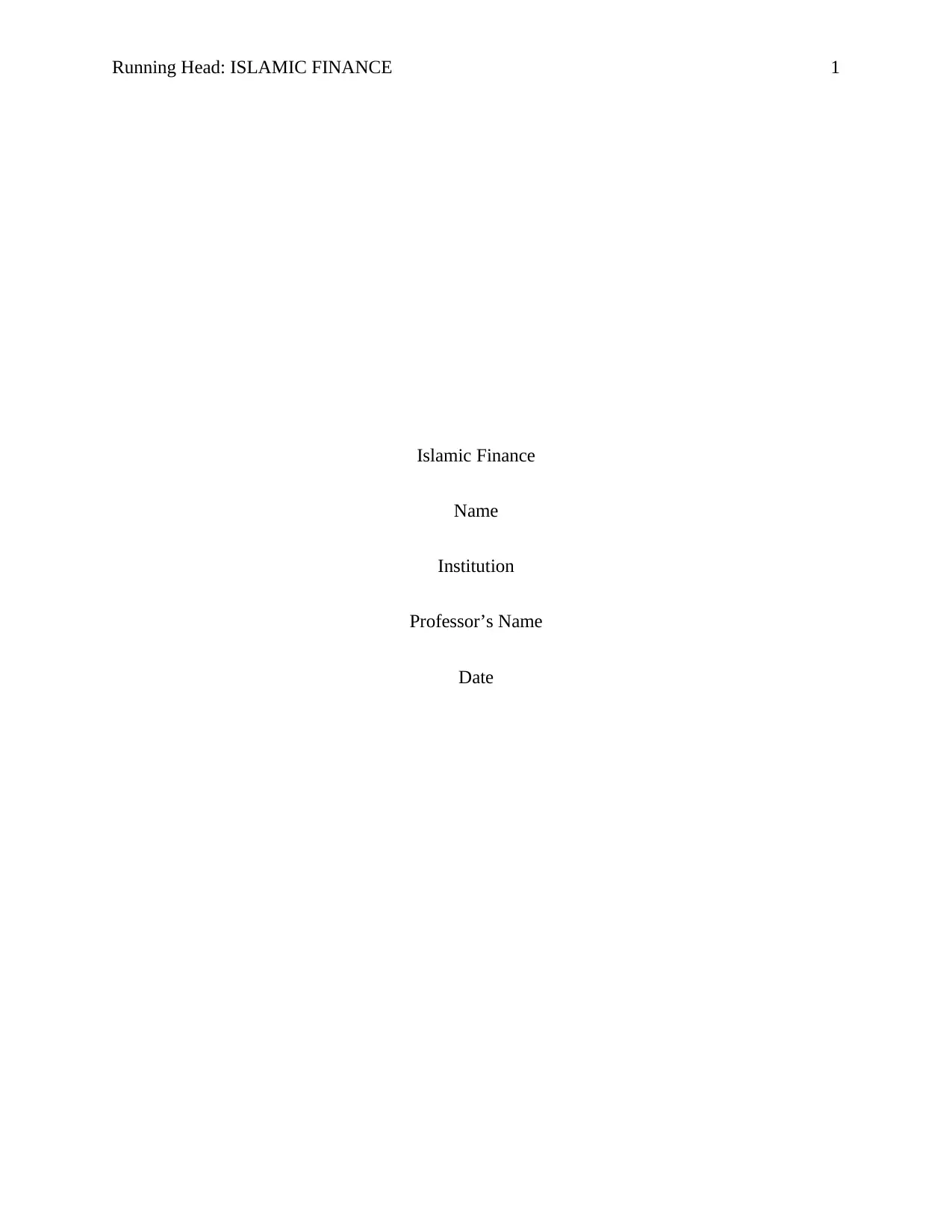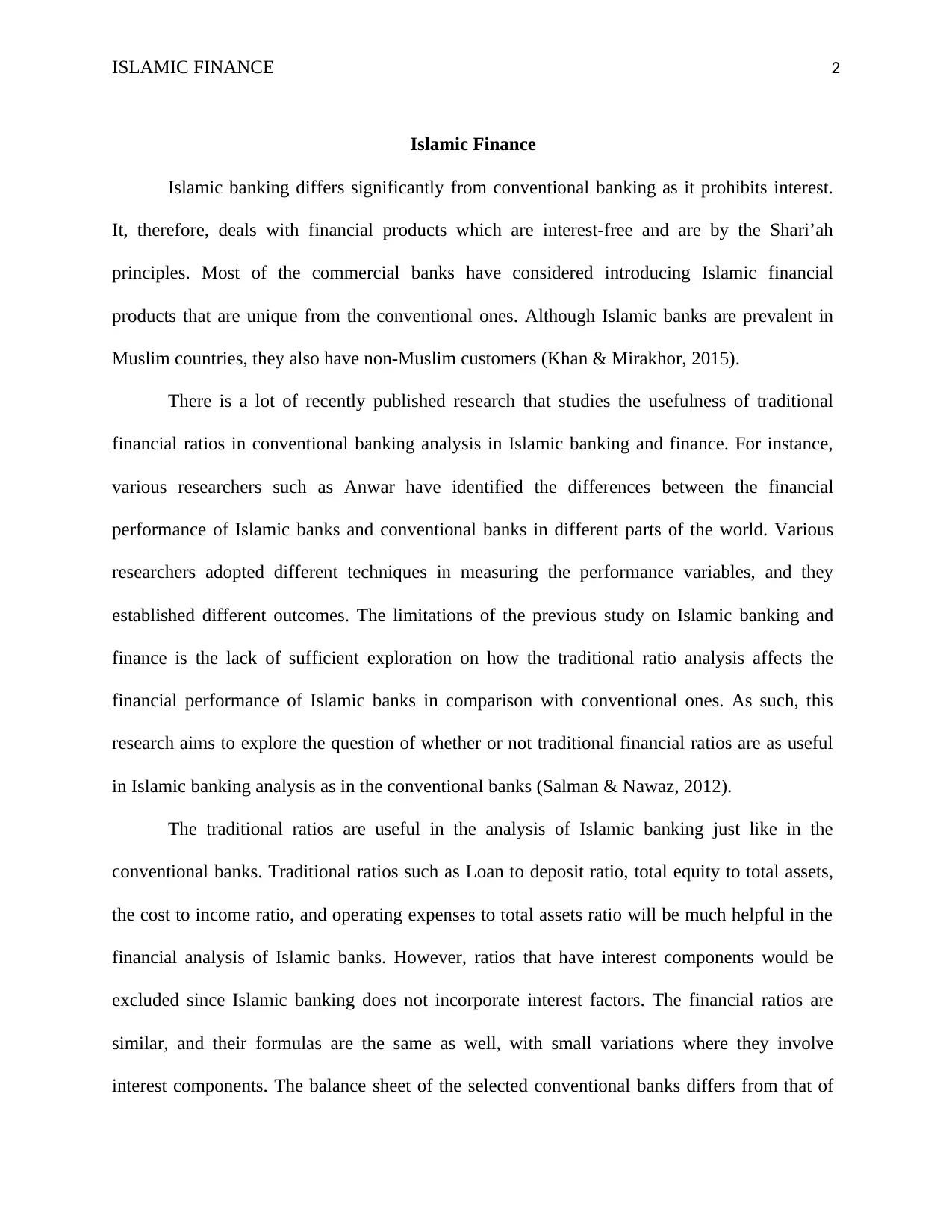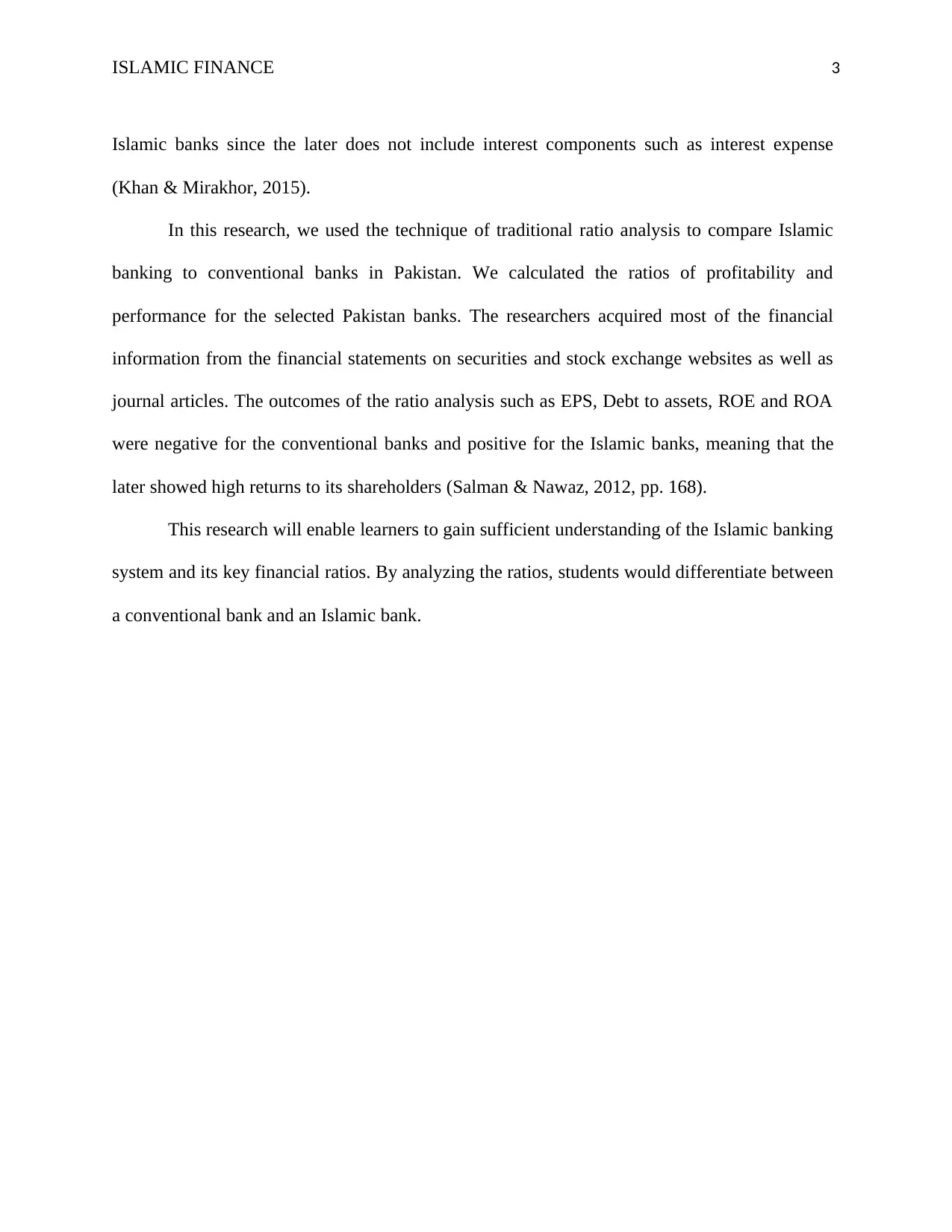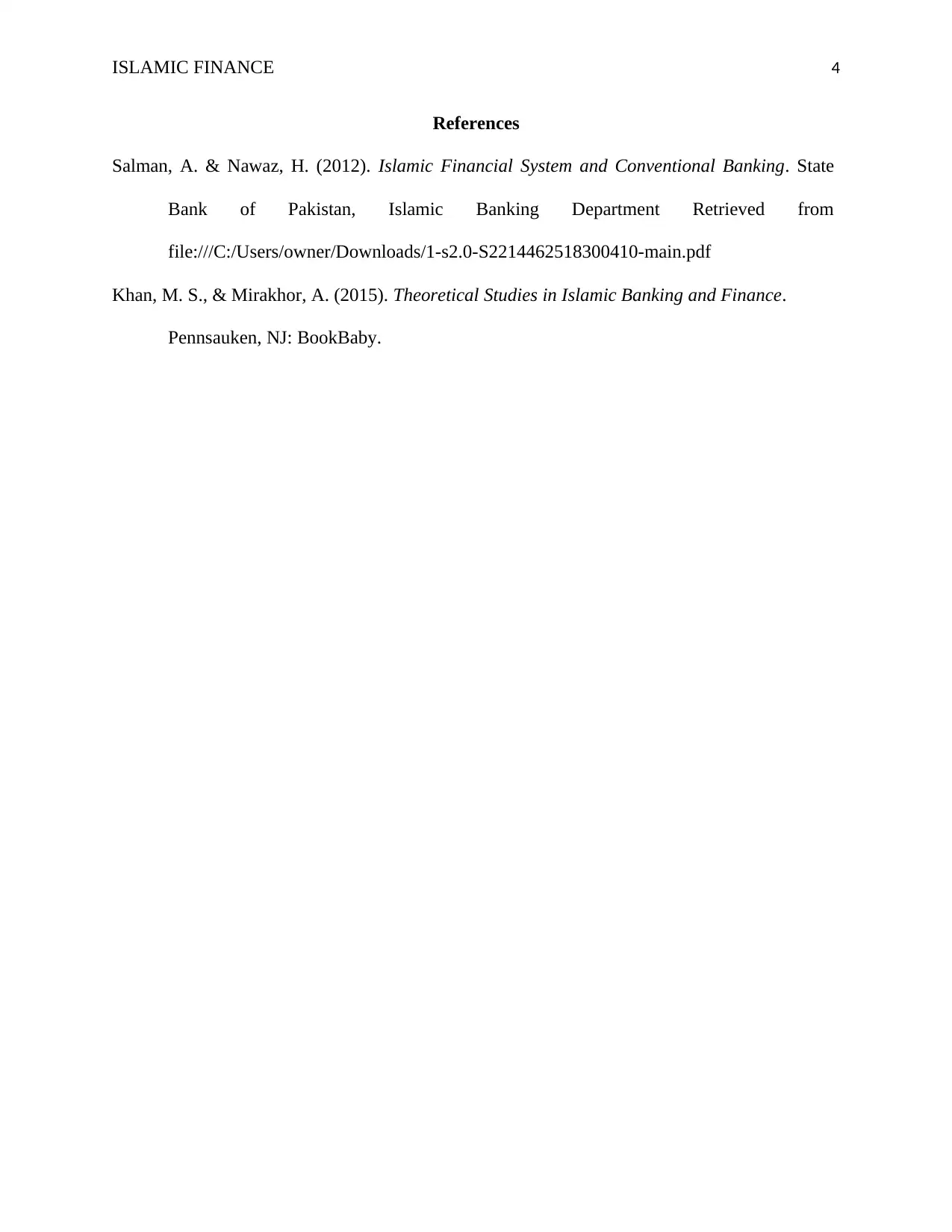A Comparative Analysis of Islamic Finance and Conventional Banking
VerifiedAdded on 2023/04/20
|4
|591
|137
Report
AI Summary
This report provides a comparative analysis of Islamic finance and conventional banking, highlighting the fundamental differences between the two systems. It explores the prohibition of interest in Islamic banking and its adherence to Shari'ah principles, contrasting it with the conventional banking model. The report examines the application of traditional financial ratios in assessing the performance of both Islamic and conventional banks, including profitability, efficiency, and liquidity. It emphasizes the exclusion of interest-related components in Islamic banking analysis. The study uses ratio analysis to compare banks in Pakistan, deriving financial data from various sources, including financial statements and journal articles. The findings reveal differences in performance metrics such as EPS, Debt to assets, ROE and ROA, indicating superior returns for Islamic banks. The report aims to enhance understanding of Islamic banking and its financial ratios, enabling students to differentiate between the two banking systems.
1 out of 4











![[object Object]](/_next/static/media/star-bottom.7253800d.svg)